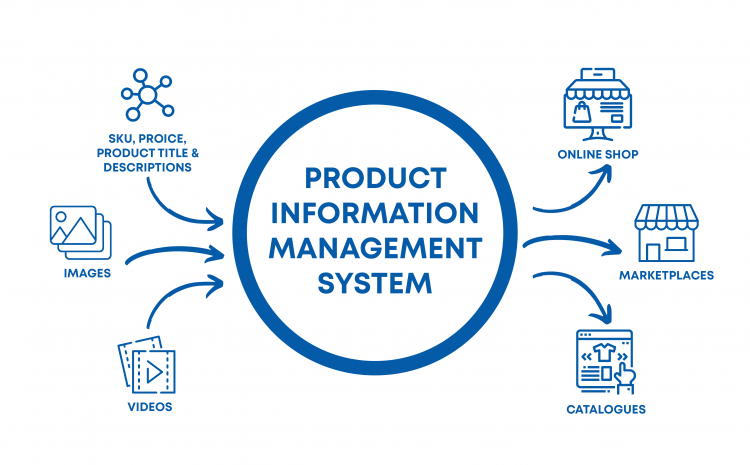PIM systems
If you are a manufacturer, retailer, product, marketing, or eCommerce manager, you’ve probably heard of product information management software (PIM), you know what they are, and you may even consider implementing one. If you are not, then this article is for you. In it, we will talk about:
- What are PIM solutions?
- When does a business need integration with a PIM system?
- What information do PIM systems collect?
- What are their advantages?
- Which units are in critical need of such software?
What are PIM systems?
PIM systems are solutions that allow you to collect, manage and enrich product information from one place, create product catalogs, filter products by specific characteristics, and distribute them in all sales channels.
When does a business need integration with a PIM system?
Online retailers usually think that once they build their online store, they are ready to sell online. But what are the processes behind one online store?
Building a web store usually involves the processes of:
- building different functionalities;
- choosing a design and adapting it to any device (mobile, desktop, tablets);
- integrating with systems (ERP, warehouse systems, etc.);
- uploading content.
The uploading content part includes product information – uploading photos of products, descriptions, prices, etc.
Many businesses usually choose their ERP systems as a source of information. What are the disadvantages of this solution?
In ERP systems, the products do not have user-friendly titles but a serial number. Uploading to the site will not be understandable. Also, they do not store images of the products and may have poor descriptions. To what would this lead?
- Bad brand image
- Bad SEO
- Low conversion rate
- Return orders due to incorrect or incompletely descriptive product information
- Increasing manual work
Why is manual work increasing? Another common practice is to store and enrich the product information in Excel spreadsheets to use them as a source later on. If you are a small business with a small number of products, probably that approach will work for you. But what happens when we work with a rich portfolio of multiple product categories that span hundreds or thousands of products? And what happens when you want to start selling elsewhere – for example, on Amazon, Emag, or even decide to make your application?
Here’s what’s happening. You will need to hire additional human resources to maintain and enrich the product information in the tables. And if you sell in marketplaces like Amazon and Emag, it’s possible to open whole new teams to structure product information according to the requirements of different platforms.
Remember that once the work on the current products is done, the process does not end. As you can guess, the prices of certain stocks change daily, some products are exhausted, and many new ones are loaded (new collections, models, etc.).
That sounds like a nightmare, but this is where PIM systems come to the rescue.
What information do PIM systems collect?
Each software is built for different purposes, but most of them include the following information:
- Basic product information – names, titles, descriptions
- Product attributes – SKU, price, discount
- Specifications – size, color, characteristics, materials, warranty information, packaging, etc.
- Supplier information
- Content for different language versions
- Specific information regarding sales channels – specifications for Amazon, Magento, Emag, etc.
Advantages
- Integrations
PIM systems speed up all work processes because many allow integration with different data sources (ERP & warehouse systems, product feeds, or old sites). That integration helps import data about specific products, systematize it, and send it to various sales channels.
If there is no information about the products besides the stocks and product number, we have to add it manually. - Optimization of manual work
Through your product information management software, you can set different filters for data exports to specific platforms. That reduces the manual work. For example, if you use the Facebook marketplace, you need the product info to be structured in a specific way, which can be different from another marketplace. That process can be automated and avoid manual uploading and enrichment of data. Also, when you need to change part of the description, price, or photos, all you have to do is log in to the PIM system, make the changes, and then update the product anywhere with a few clicks. - Minimize errors arising from manual work
Working with multiple products and selling them in different channels, occurred errors of the manual work can increase – the wrong price, putting the incorrect description to the product when uploading it in various sales channels, etc. After the integration with sales channels, the process of uploading and product updating becomes automated, which helps to minimize errors of this nature. - Working with different suppliers, you can request product descriptions or photos from them, import them into the PIM system, and modify them for your purposes.
- Ability to create different rules. The rules can be of any nature – price, or when certain products to be enriched.
Which units need the PIM system?
First and foremost, these are the sales team that needs the most up-to-date and accurate product information.
Ecommerce managers understand the need for consistent and updated content to make the user experience memorable and increase conversions.
The marketing team oversees the delivery of consistent information everywhere. That helps build the overall brand experience.
Customers will buy confidently, knowing they can count on your brand.
Conclusion
PIM systems are product information management systems. They are characterized by two-way data processing – receiving, data processing, content enrichment, and sending data to sales channels.
They play an essential role for online retailers who want to grow their business by helping automate the manual work and minimize errors resulting from it by providing up-to-date, consistent information everywhere.



